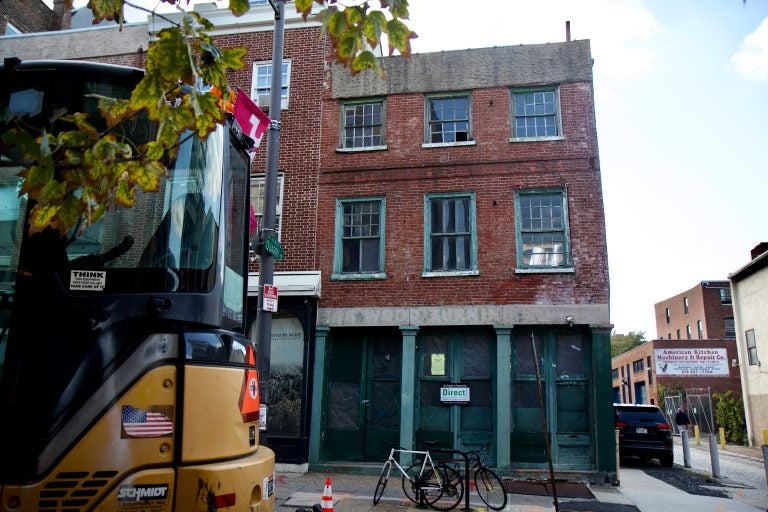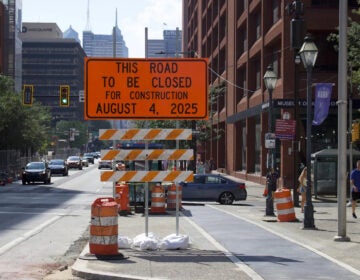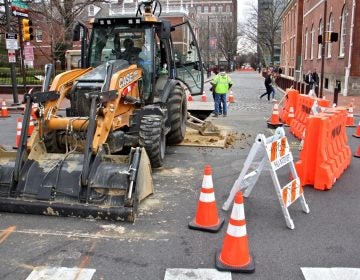City planners are debating if mega-townhouses threaten Old City’s character
Mega-townhouses are popping up on Old City’s shop-lined streets and some fear the development trend could pose an existential threat to the historic neighborhood.

The former John Grass Wood Turning Company on North 2nd Street in Old City. (Kimberly Paynter/WHYY)
Mega-townhouses are popping up on Old City’s shop-lined streets and some fear the development trend could pose an existential threat to the historic neighborhood — one of the nation’s oldest commercial centers.
“As development has occurred recently, developers decided residential was more of a sure bet than commercial,” said Joe Schiavo, a longtime resident and activist. “That choice is having a detrimental effect on commercial corridors in Old City.”
Schiavo isn’t just waxing nostalgic about the changes he sees in his neighborhood. He wrote a zoning bill about it.
That bill, introduced in City Council by member Mark Squilla, would require a non-residential use at street level in any building in the commercial heart of Old City zoned CMX-3, a classification designed for small to medium-sized apartment buildings but used for large single-family homes.
Under the current code, properties with that zoning aren’t required to have a non-residential use on the ground level. The bill would allow something like a lobby or a gym used by building residents but a domestic use such a ground-floor apartment would be barred.
“Old City is a very pedestrian-friendly area, where they would like to have more eyes on the street and more activity on the ground floor area,” said Andrew Meloney, a planner who works for the city.
The bill tweaks the Old City overlay within the city’s zoning code, a special carve-out for the storied historical neighborhood that gives the area slightly different building regulations than the rest of the city.
Schiavo points to the Trenton Crockery building, at 2nd and Arch streets, as an example of the problem. The developer there turned four storefronts into ground-floor apartments. Two commercial storefronts remain in the building. Meanwhile, the John Grass Wood Turning Company building at 2nd and Quarry hosted commercial uses for almost two centuries before recently turning into private living space.
Not everyone supports the bill. Members of the city’s Planning Commission asked why the bill should be focused so narrowly on Old City.
After all, one of the reasons the city overhauled its zoning code in 2012 was to eliminate all the special exemptions and rules that riddled the old code and kept it from working as a coherent policy document.
“Given my druthers, I think that if there is an issue with CMX-3 it would be nice to see that fixed rather than have a lot of overlays,” said Nancy Rogo Trainer, a planner at Drexel University and city commissioner. “If this is an issue in a lot of neighborhoods, it would be great to see it resolved all over the city.”
The Planning Commission decided to express its reservations by simply putting off consideration of the bill until October. If it is to advance, the legislation still needs to come before the City Council’s Rules Committee, which will not meet until after the next Planning Commission meeting.
Because the legislation is specific to Squilla’s district, if he continues to champion the effort Schiavo’s bill is almost certain to become law.
WHYY is your source for fact-based, in-depth journalism and information. As a nonprofit organization, we rely on financial support from readers like you. Please give today.







